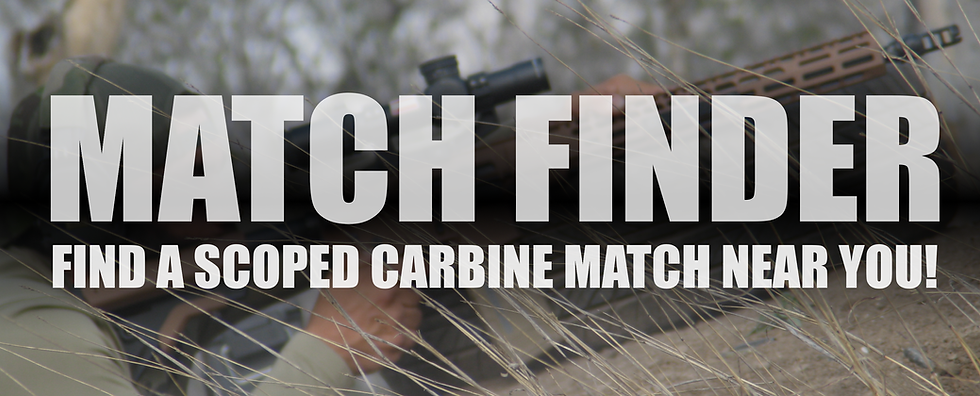How to Train for your First Gas Gun Match
- Sun and Shadow
- May 4
- 3 min read
Updated: Sep 3
You finally signed up for your first gas gun match! You want to put your best foot forward, but what should you be working to prepare? We discuss the main keys you'll want to know to get ahead at your first match!
Build a Ballistic Profile
First, you need to head to the match with good ballistic data on your rifle and ammo. If you don't know where your bullet will impact along its ballistic trajectory, then you'll have a hard time hitting targets at distance, and may pose a safety risk at some ranges. Start with a good zero on your optic, typically at 100 yards for these types of matches, and then use a chronograph to measure the average velocity of the ammunition you'll be using at the match.
It's important to use the same ammo that you plan to use at the match (we recommend match grade ammunition for consistency). Switching between ammo and even between manufacturing lots of ammo, can cause inconsistency in measurements and hits. After you've measured the velocity of your ammunition in your rifle, you can enter all the rifle's details and environmental variables into a ballistic solver, such as Hornady 4DOF, GeoBallistics, Applied Ballistics, or similar, in order to complete your ballistic profile. You can then build a hard data card for your gun. We detail how to draft a ballistic profile in Hornady 4DOF here:
Dryfire Reps
After you've built a good ballistic profile, the next thing to do is practice dryfire. You probably hear this all the time, but dryfire reps are critical to build a relationship with your rifle and muscle memory for the trigger press. Knowing exactly where the trigger will break is very important for getting hits at distance and calling your own shots, so having some time to work on this in dryfire is a key to success.
When you're working on dryfire, choose target sizes that you're likely to see in a competition. We recommend using paper or Post-It notes that you've cut to be 1-2 MILs tall if you're trying to work speed, and 0.5 MIL tall if you're trying to work precision and stability. These target sizes are typical for precision gas gun matches, and will help you to decrease your time getting on target and breaking clean shots.
The 5 Main Body Positions
The last major step you'll want to practice will be body positions. There's a lot of detail here, but we've broken down the 5 main body positions to practice for scoped carbine matches. They are: tall standing, wide standing, high kneeling, low kneeling, and prone positions. These five body positions will get you about 80% of the stages you'll see in a match, so it's important to be good at these five stances. We show the stances in the first linked video in this blog, but we go into major detail of them all over on the free GASGNNR Facebook page.
The 5 main body positions are built to give the shooter the best Natural Point of Aim. We focus on keeping the body square to the target, keeping a neutral center of gravity, and minimizing the reticle's wobble zone with consistent positioning. The details are incredibly in-depth, so we recommend jumping on the GASGNNR page to see them in detail.
Gear Selection
Don't worry too much about gear for your first gas gun match. There's a lot of nuance to it, so it's usually better to try before you buy. As long as you have good data on your rifle and ammo, understand how to read and make adjustments on your scope, and come with a good attitude, you'll be able to borrow gear like shooting bags, bipods, tripods, and spotting scopes from other competitors to see what you like before spending a bunch of money!
Gas Gun matches are a great opportunity to test your gear and really see what your rifle can do at distance! If you're looking for a match close to you, check out the Scoped Carbine Match Finder tool on our site!




Comments